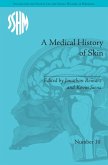To Zinsser, scientific research was high adventure and the investigation of infectious disease, a field of battle. Yet at the same time he maintained a love of literature and philosophy. His goal in Rats, Lice and History was to bring science, philosophy, and literature together to establish the importance of disease, and especially epidemic infectious disease, as a major force in human affairs. Zinsser cast his work as the "biography" of a disease. In his view, infectious disease simply represented an attempt of a living organism to survive. From a human perspective, an invading pathogen was abnormal; from the perspective of the pathogen it was perfectly normal.
This book is devoted to a discussion of the biology of typhus and history of typhus fever in human affairs. Zinsser begins by pointing out that the louse was the constant companion of human beings. Under certain conditions-to wash or to change clothing-lice proliferated. The typhus pathogen was transmitted by rat fleas to human beings, who then transmitted it to other humans and in some strains from human to human.
Rats, Lice and History is a tour de force. It combines Zinsser's expertise in biology with his broad knowledge of the humanities
Dieser Download kann aus rechtlichen Gründen nur mit Rechnungsadresse in A, B, BG, CY, CZ, D, DK, EW, E, FIN, F, GR, HR, H, IRL, I, LT, L, LR, M, NL, PL, P, R, S, SLO, SK ausgeliefert werden.









